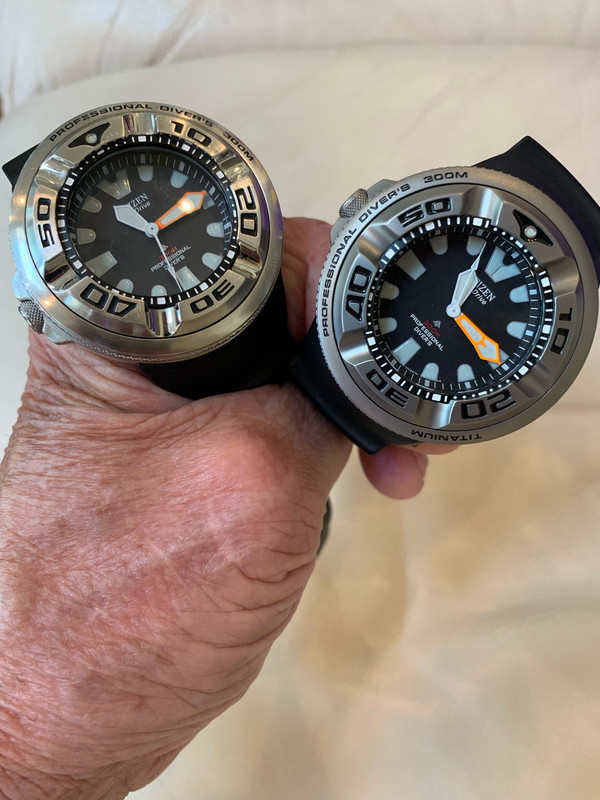Popgun Pete
Contributor
I just used Tuna’s as I bought them when they were simply tools for the job.

Welcome to ScubaBoard, the world's largest scuba diving community. Registration is not required to read the forums, but we encourage you to join. Joining has its benefits and enables you to participate in the discussions.
Benefits of registering include
So while you’re sitting in the sat chamber breathing some helium, the helium molecules can enter the watch and therefore need to be released when returning to the surface. That makes sense.In saturation diving the body absorbs a certain amount of gas due to the higher pressures. Nitrogen and oxygen at high levels are bad for you and can cause many problems, so the oxygen level is lower in the breathing air at greater depths and the bulk of the gas is something inert like Helium. The Helium Oxygen breathing gas is known as Heliox and provides the volume to inflate the lungs, but the body only needs a certain oxygen level in the blood. That is where the Helium comes from and because the gas molecule is so small it can get into a diving watch while you are sitting high and dry in the chamber slowly having ambient pressure in the chamber reduced to bring you back up to surface pressure. No chamber exposure, no helium getting into your watch. Some watches like the Seiko Professional 600 and later 1000 don’t need a helium release valve because of the construction of the watch, the works in a ‘Tuna’ go in from the front, and there is no removable case back on those watches. The Tuna Can nickname derives from the cylindical titanium case without its shroud.
View attachment 803153
As for a crown at 12 o’clock we had this one a year or so back.
View attachment 803134
When you wear 52 mm in titanium Tunas it is surprising how big this looks when it is only 47 mm. I think watches start at 44 mm unless someone is rather tiny.I surprisingly dont hate this -- but it looks like it is a monster size-wise.
I have the same two zillas. they're my favorite watches....by far.The depth ratings for dive watches are static ratings, the watch being static. However, a watch in use is not static, it is waved and bumped about during use, dynamic. I am not talking about the seal(s), I mean the use of the watch when worn about. You may consider the depth ratings absurd or not but they do carry meaning. A 150 to 200 meter rating is generally good enpugh for a watch wearble during diving activities. Divers in commercial use may need helium valves or due to long and continuous submersion often have very generous depth water resistance ratings.
Two of my favorites to wear and dive with, an EcoZillia and a TiZilla, 300M water resistance, and they have the saucer shape:


